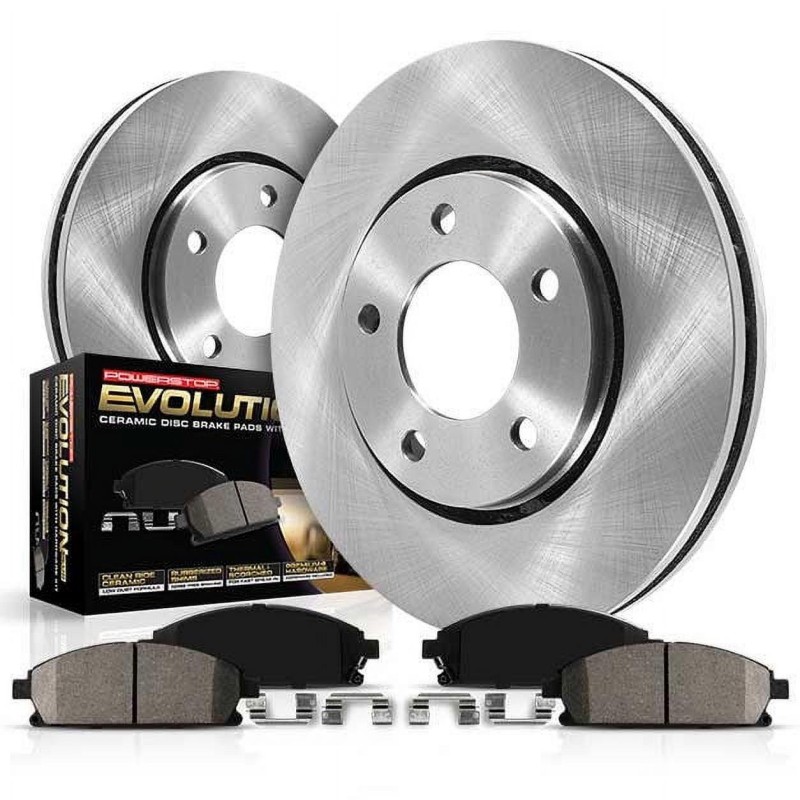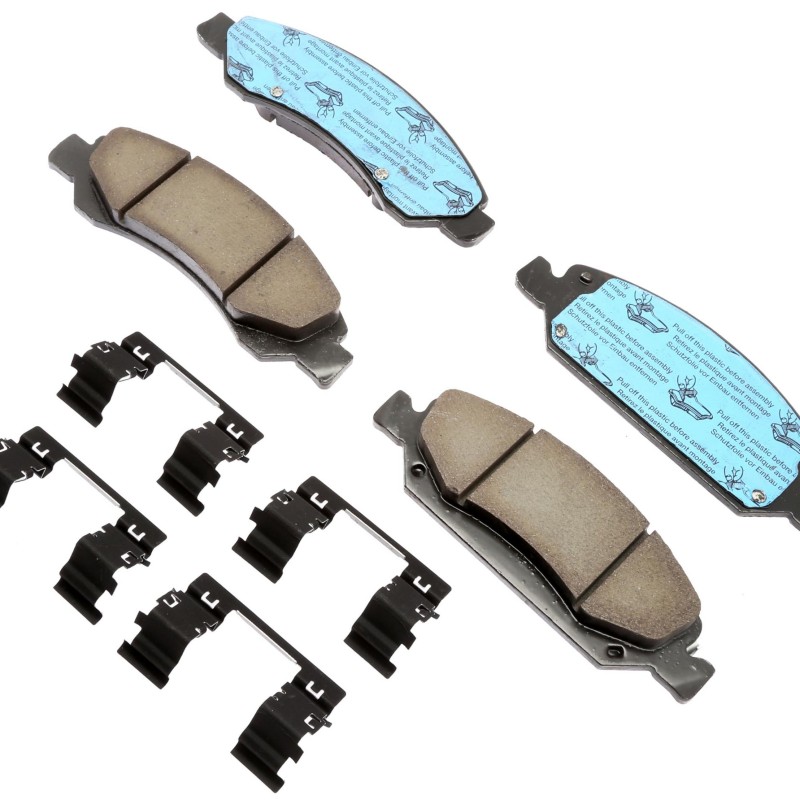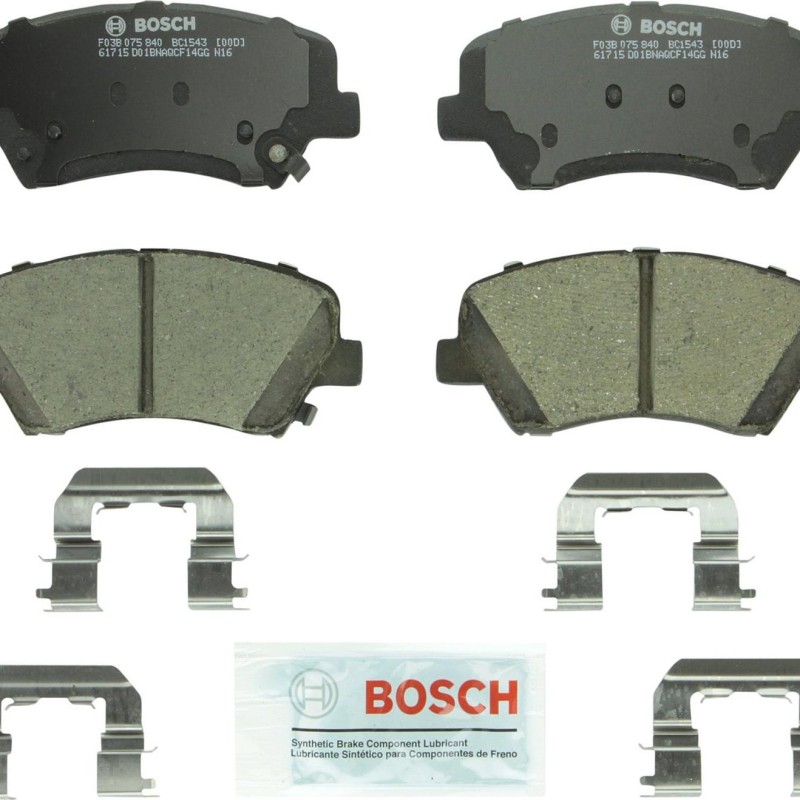When it comes to ensuring a safe drive, the unsung hero of your vehicle is undoubtedly the brake pads. These essential components play a crucial role in the braking system by creating the necessary friction to slow down or stop your car. Over time, just like any other tool or component, brake pads wear out and require replacement. A clear understanding of brake pads can empower drivers to take charge of their vehicle maintenance and ensure safety on the road. In this article, we will explore the importance of brake pads, how they function, the signs you need to look for when diagnosing issues, and tips on their maintenance for longevity. Additionally, we will discuss the relationship between brake pads and tire replacement, highlighting how effective tire maintenance complements a well-functioning braking system.

The Importance of Brake Pads in Vehicle Safety
Brake pads are vital to the overall braking system of any vehicle, serving as the interface between the brake calipers and the rotors. When you press down on the brake pedal, hydraulic pressure creates force that pushes the brake pads against the rotors. This action generates friction, which is essential for slowing the car down or bringing it to a complete stop. Given their critical role in vehicle safety, understanding the importance of brake pads goes beyond just ensuring they’re in good shape; it can be the difference between a safe ride and a potential accident. Regularly checking and maintaining brake pads is essential for both performance and safety.
Moreover, the type of brake pads you choose can significantly impact your driving experience. Different materials—such as organic, ceramic, and semi-metallic—offer various benefits and durability levels. It is vital to understand how each option aligns with your driving needs. Consistent wear and tear on your brake pads can affect your tire maintenance as well; if your brake pads are severely worn, they might lead to increased wear on your tires. Thus, effective brake maintenance ties directly into the longevity of your tires, showcasing the interconnectedness of vehicle components.
Identifying Signs of Worn Brake Pads
Being aware of the warning signs of worn brake pads can help you address issues before they escalate. One of the most common indicators is a squeaking or squealing noise when braking. This sound typically results from a built-in wear indicator, a small metal tab that produces noise when the pad has worn down to a critical level. Once you hear such sounds, it’s essential to diagnose the problem promptly to avoid further damage or reduced stopping power.
Another signal to keep an eye on is the feeling of your brake pedal. If your pedal feels softer than usual or requires more effort to engage, it may indicate that your brake pads are wearing thin. Additionally, a shaking or vibrating steering wheel during braking is another critical warning sign. This could suggest unevenly worn brake pads or issues with other braking components. Being proactive in diagnosing these signs not only saves you time but also ensures the safety of both you and your passengers.

The Process of Fixing Brake Pads
Fixing brake pads is a task that many vehicle owners may prefer to tackle on their own. However, it is essential to approach this repair with care and the right tools. Before you begin, make sure you have the appropriate tools on hand, such as a lug wrench, jack, jack stands, socket set, and, of course, replacement brake pads. Having these tools will enable you to perform a speedy brake pad replacement and minimize downtime.
To start, safely elevate the vehicle using the jack stands and remove the wheels to expose the brake components. Next, remove the caliper bolts to free the caliper and gently slide it away from the rotor. At this point, taking a close look at both the pads and rotors is essential for diagnosing any additional issues. If the pads are worn down to less than a quarter of an inch, it’s time for replacement. After removing the old pads, install the new ones following the manufacturer’s instructions, ensuring they are fitted correctly. Finally, reassemble the braking components and double-check all connections before lowering the vehicle. With the right approach and tools, replacing brake pads can be a straightforward DIY task.
The Role of Brake Pads in Tire Maintenance
While discussing brake pads, it’s vital to understand how they influence tire maintenance. Worn brake pads can affect the alignment and overall performance of your tires. When brake pads do not provide effective stopping power, it can lead to unnecessary friction and uneven tire wear. This uneven wear not only affects your driving experience but can also compromise the safety of your vehicle.

In addition, it’s essential to remember that tire replacement often coincides with brake pad replacement. As tires and brake systems work in tandem, maintaining both ensures a safe driving experience. Regular tire rotation and balanced alignment can improve brake performance while extending tire life. Ultimately, investing time in tire maintenance will enhance the longevity of both your brake pads and tires, keeping your vehicle in optimal driving condition.
Diagnosing Brake Pad Issues: A Guide
Proper diagnosing of brake pad issues is critical to ensuring your vehicle operates safely and efficiently. Start by listening for unusual sounds while driving or braking, as previously mentioned. These audible cues are your first indicator that something may be amiss.
Next, consider performing visual and physical inspections. Inspect the brake pads through the wheel spokes, if possible, to assess their thickness. You can also remove the wheel for a closer inspection. Look for uneven wear patterns, cracks, or other signs of damage. A specialized tool called a brake pad gauge can help measure pad thickness, providing an accurate assessment of their condition.
Additionally, monitoring your vehicle’s braking performance is essential. If you feel any significant changes, such as decreased responsiveness or increased stopping distances, it’s time to closely inspect your brake system. Documenting these changes can help you have productive conversations with a mechanic if professional assistance is needed.

The Best Practices for Brake Pad Maintenance
Maintaining brake pads is vital to prolonging their lifespan and ensuring a safe driving experience. Regular inspections every six months are a good rule to follow, especially if you frequently drive in urban environments or face heavy traffic, which may lead to increased brake wear.
Another effective maintenance strategy is to pay attention to your driving habits. Aggressive driving, such as rapid acceleration and sudden stops, can significantly reduce the lifespan of your brake pads. Practicing smooth acceleration and braking can mitigate wear and tear on your brake system.
Rotating your tires regularly and making sure they are properly inflated can also contribute to the overall health of your braking system. The tire pressure can influence your vehicle’s stopping power, making it critical to include tire maintenance as part of your overall vehicle upkeep strategy. Integrating these practices will lead to smoother rides and increased safety on the road.
The Warning Signs of Neglecting Brake Pad Maintenance
Failing to maintain brake pads can have severe consequences, not only for the vehicle’s performance but also for the safety of the driver and passengers. Ignoring warning signs can lead to catastrophic failures, including reduced braking ability and compromised safety during high-speed driving.
One of the first indications that brake pad maintenance has been neglected is an unusual increase in stopping distances. You might notice that your vehicle takes longer to come to a complete stop or requires you to press harder on the brake pedal. This often indicates worn-out brake pads that need immediate replacement.
Other consequences of neglect include noticeable vibrations or shaking when applying brakes, which may suggest uneven pad wear or potential issues with the rotor. Furthermore, the appearance of grinding noises can indicate that the pads are severely worn down, allowing the metal backing to come in contact with the rotor. This condition can lead to extensive damage, resulting in costly repairs.
Lastly, brake fluid leaks can indicate significant problems within the braking system. If the brake pedal feels spongy or low, coupled with puddles of brake fluid under the vehicle, immediate inspection and repair are necessary.
Being vigilant about regular maintenance checks and listening to the performance of your vehicle not only helps avoid costly repairs down the line but also ensures the safety of all road users.

Conclusion: Proactive Maintenance for Longevity and Safety
Brake pads are central to vehicle safety, and understanding their role, maintenance practices, and the signs of wear can significantly affect your driving comfort and security. Taking a proactive approach to diagnostics can prevent major issues and minimize repair costs over time. Regular inspections, timely replacements, and prioritizing the quality of brake pads are all essential practices that contribute to overall vehicle health.
Moreover, being aware of how tire maintenance and brake pad conditions interact is vital. Your driving habits, weather conditions, and even the choice of brake pad materials can significantly impact how well your braking system performs.
Investing time and resources into understanding and maintaining your brake pads not only safeguards your vehicle but also ensures a safer driving experience for you and your loved ones. By adhering to recommended service intervals and fostering a mindful approach to vehicle care, you’ll not only maximize the life of your brake pads but also contribute positively to your vehicle’s overall performance and reliability.